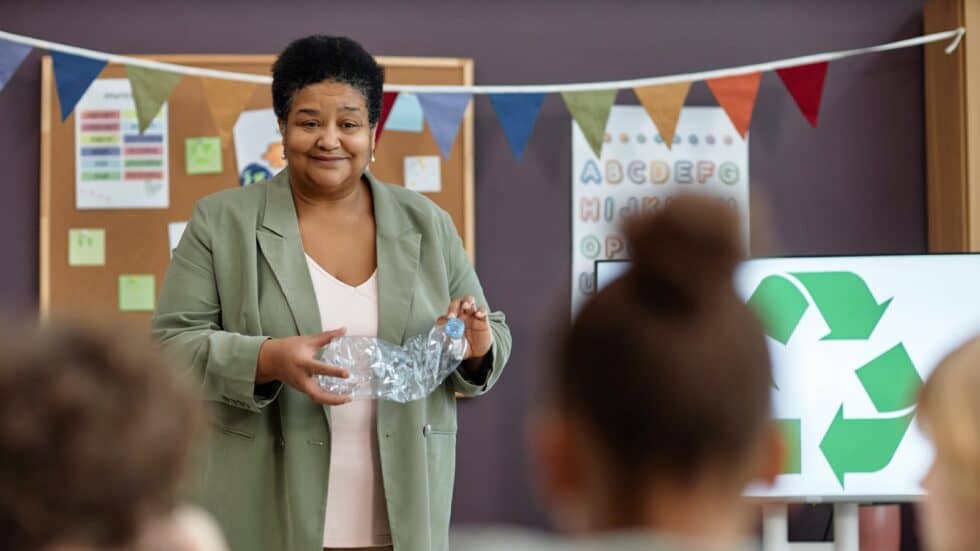Learning to Teach: An Educator’s Guide to Teaching & Learning Styles

If you’ve ever had someone try to teach you something new, it probably became glaringly obvious – quite quickly – that we all learn, process, and understand things differently.
Perhaps you just weren’t getting it – try as you might, you couldn’t quite grasp the concept they were trying to show you. In truth, that may not have been entirely your fault. Indeed, the mark of a good teacher is not to get frustrated when your pupil isn’t picking up what you’re putting down, but instead, to be able to learn how to teach them better.
Whether it’s visual, auditory, reading/writing, or kinetic, understanding that learning styles vary immensely from one student to another is key to going above and beyond as an educator. Is that unruly teenager acting up at the back of the classroom? Appreciating that perhaps, they’re not slow to learn, but instead, they just have a different learning style to the more academic pupils could help bring out the best in them.
The best part? By understanding how each individual learns best, educators can tailor their teaching methods to suit each student. This way, pupils can get the most out of their classes, and similarly, teachers can achieve the most optimal results in their classrooms.
Wondering which teaching and learning styles go hand in hand? Completing an online EdD in Teaching and Learning can get you up to speed. In the meantime, here’s our educator’s guide to the best combinations.
Matches Made in (Education) Heaven: Teaching and Learning Style Combinations to Complement Your Classes
Yes, there exist several different learning styles. Most importantly, though, each learning style can either be complemented – or dismissed – by the way we choose to teach. Adopting varied teaching styles is not only fairer for each individual, but it also gives students traditionally viewed as ‘stragglers’ a chance to catch up – and learn in a way that makes sense to them. This perspective is, of course, a challenge to the traditional classroom – but, it could herald the future of a more democratized, fairer educational system.
Here’s how to combine different teaching and learning styles to optimize your students’ classroom experience.
Also Read – 5 Tips for Nontraditional College Students
Adapting Lessons for Auditory Learners
As the name of the learning style would suggest, auditory learners learn best through the power of sound. Try peppering your lessons with podcasts, audio snippets, or music. This is sure to get them listening.
For an innovative way to engage audio-centric students, see them excel by incorporating spoken word or poetry readings into your classes. There is even the option to enter them into a poetry recital competition, like the national arts education program Poetry Out Loud, for example. Who knows, you may even have a future rap star on your hands.
Visionary Techniques to Engage Visual Learners

Visually stimulating classrooms are the way to a visual learner’s heart – and brain. Try using visual aids – elements like colorful charts, graphs, and videos – to capture their attention.
Likely, your visual learning students will also be quite artistically creative. Capitalize on this talent by having them draw, paint, or create visual art for their projects. There may even be a budding little Picasso in your midst.
Embracing the Written Word for Readers and Writers
For students who learn best by reading and writing, written exercises work best. These types of learners also don’t seem to mind the tried and true repetitive method of rote learning – so don’t be afraid to lean on this traditional teaching method in this example.
Being Kind to Kinetic Learners
Kinetic learner? Likely, they like to be hands-on. Consider integrating practical activities into your classes – like science lab experiments, for example. For kinetic learners, these types of activities – things they can do with their hands – will help support their learning comprehension.
Think outside the box in this example – it doesn’t always need to be test tubes and Bunsen burners. But if kinetic learners can be exposed to connecting with learning materials by touch, this will help them learn best.
Yes, we all learn differently. However, catering to these learning styles can be an educator’s secret weapon.
Incorporating kinetic or visual teaching aids into your classes might finally help that shy student come out of their shell, or even, bring rambunctious ones into line. Visual aids can help keep classrooms engaging for visual learners, while readers and writers might be just as happy with written exercises. The key? Knowing how to pair teaching styles with each student’s learning needs – so that everyone in attendance is happy, thriving, and focused. Even better? Exposure to different teaching styles will also produce more well-rounded students overall.
But the best part about having a variety of teaching styles up your sleeve? As an educator, this makes you adaptable, flexible, and ready for anything your students will throw at you.





